Back to blog
8 MIN READ
The 2 crucial steps for successful mobile user engagement
PUBLISHED
27 October, 2022

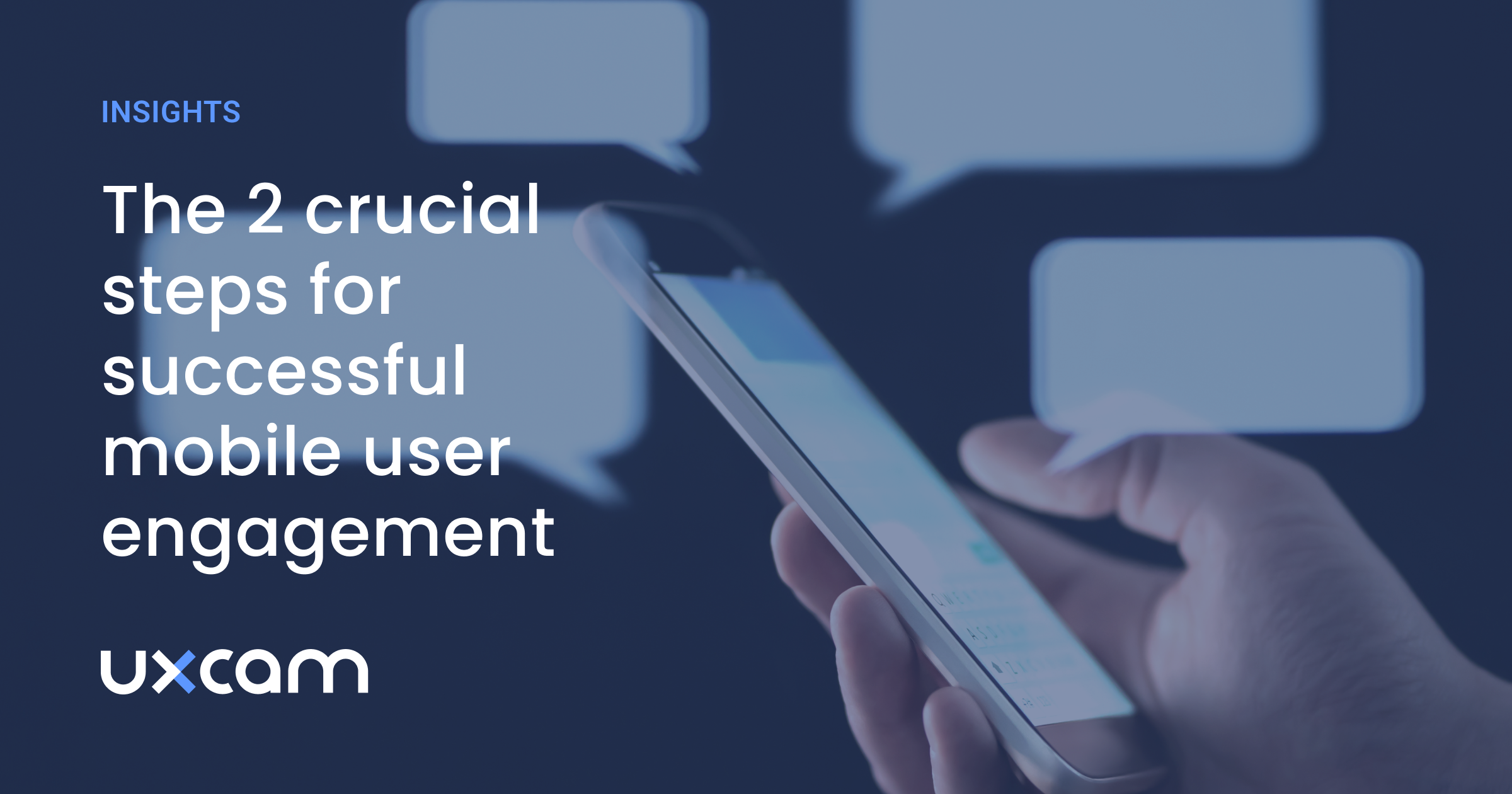
If only we could skip mobile customer engagement as a step and go straight to conversions. But, the reality is that you can’t achieve real sales without engaging your audience first. Luckily, there is a proven way to spark your customers’ interest and convert it into monetary metrics later.
As the Pushwoosh Team has determined, behavior-based communications have 7x higher CTRs than broadcast messages and lead to 30x higher in-app engagement and 25x conversion into target action.
Keep reading to learn how to choose the best moments to reach out to your mobile customers and engage them in the most effective ways.
What is mobile customer engagement?
Mobile customer engagement is defined as the brand’s success in engaging its audience through a mobile website and/or app. This kind of engagement is measured with user activity metrics such as DAU, MAU, and stickiness rate. They are known to largely depend on mobile messaging performance; this is why, when talking about mobile customer engagement, we always talk about communications. In order to bring the desired engagement, those communications have to be on-point: relevant, timely, tailored to the needs of a particular user segment, personalized, and sent in response to the behavior of an individual user. Sounds demanding but perfectly achievable if you follow the guide you’re reading.
The right time for mobile customer engagement
You’ll need a general view of your customer’s mobile journey to answer this question. Without getting into details, you can outline that every user goes through the same stages after the app install:
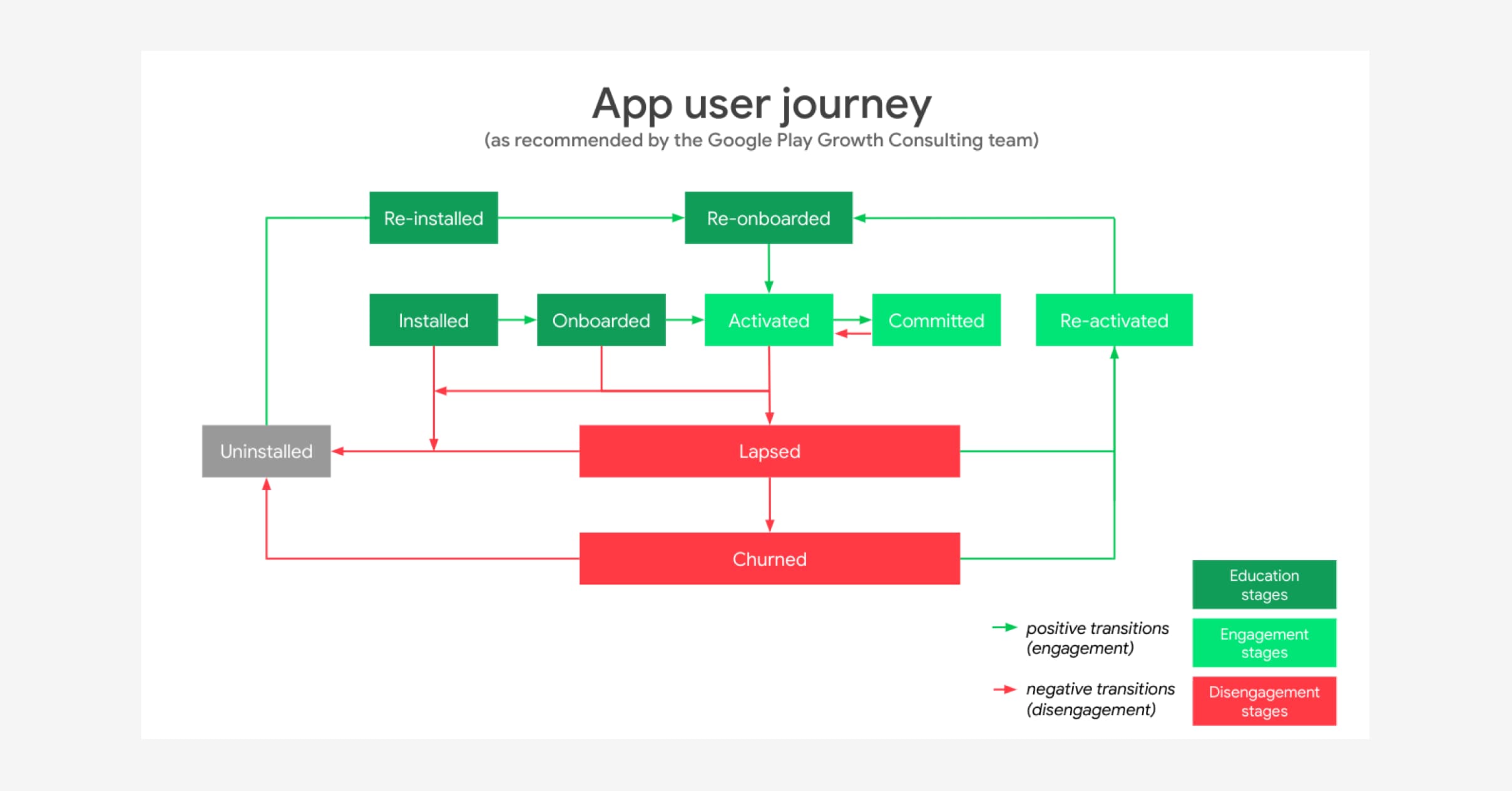

Source: Google Play Apps & Games
According to this flow diagram, there are three crucial engagement stages where on-point communications are the most needed. Before arriving at these points, a user has absorbed the educational information you delivered and seen the value of your app in theory. Now it’s time for your customers to take action: experience the benefits of your product or app in practice and convert.
Can you nudge the user in the right direction? Absolutely, if you know the exact stage your customers are at and if you can tailor your engaging communications accordingly.
Your mobile customer’s position on their journey
The right timing is half the victory in communication. Personalization is the other half. Mobile customers are used to all the experiences tailored to them, and your messages will only be well-received if they arrive at the right moments for each customer. Sounds challenging — but achievable — if you start with large strokes:
Step 1: Determine if the user needs to be activated
Referring to the App User Journey diagram above: your first job is to tell which stage a customer has passed and what the following action is logical to expect from them next.
You can do this by tracking users’ in-app behavior with triggered events. Once you’ve set them in your application, you will be able to keep receiving and updating information on your mobile customers in real-time. So whenever another user moves on to the next stage, you will get to immediately respond to their transition with relevant communications.
With the help of triggered events, you will be able to determine:
Has the user been activated?
Activation actions differ from one app to another: a language-learning app may wait for their newcomer to complete their first free lesson, while a delivery app will consider a user activated after the first order (or even a few orders) they have paid for.
The general logic remains the same:
1. You will target users who have passed through your app onboarding flow 2. Then wait for them to take the activation action 3. If a user doesn’t trigger the activation event shortly, you can nudge them with an in-app message 5. If the user is still active in the app; send a push notification 7. If the customer has stopped engaging with the app, send an email 8. Check if your mobile customer has become activated after receiving these messages
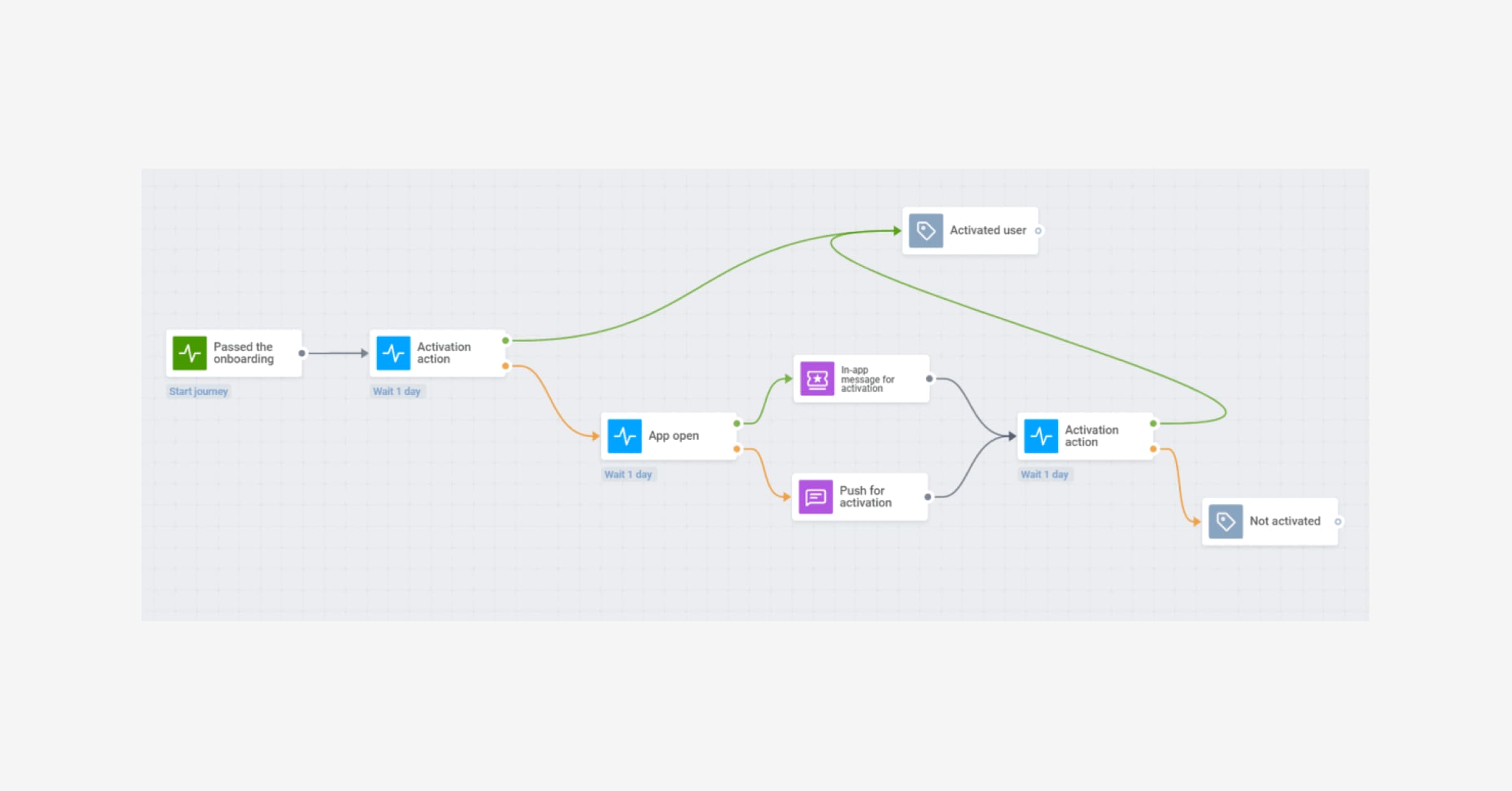

Here are a few examples of communications you can send to engage and activate your mobile customers:
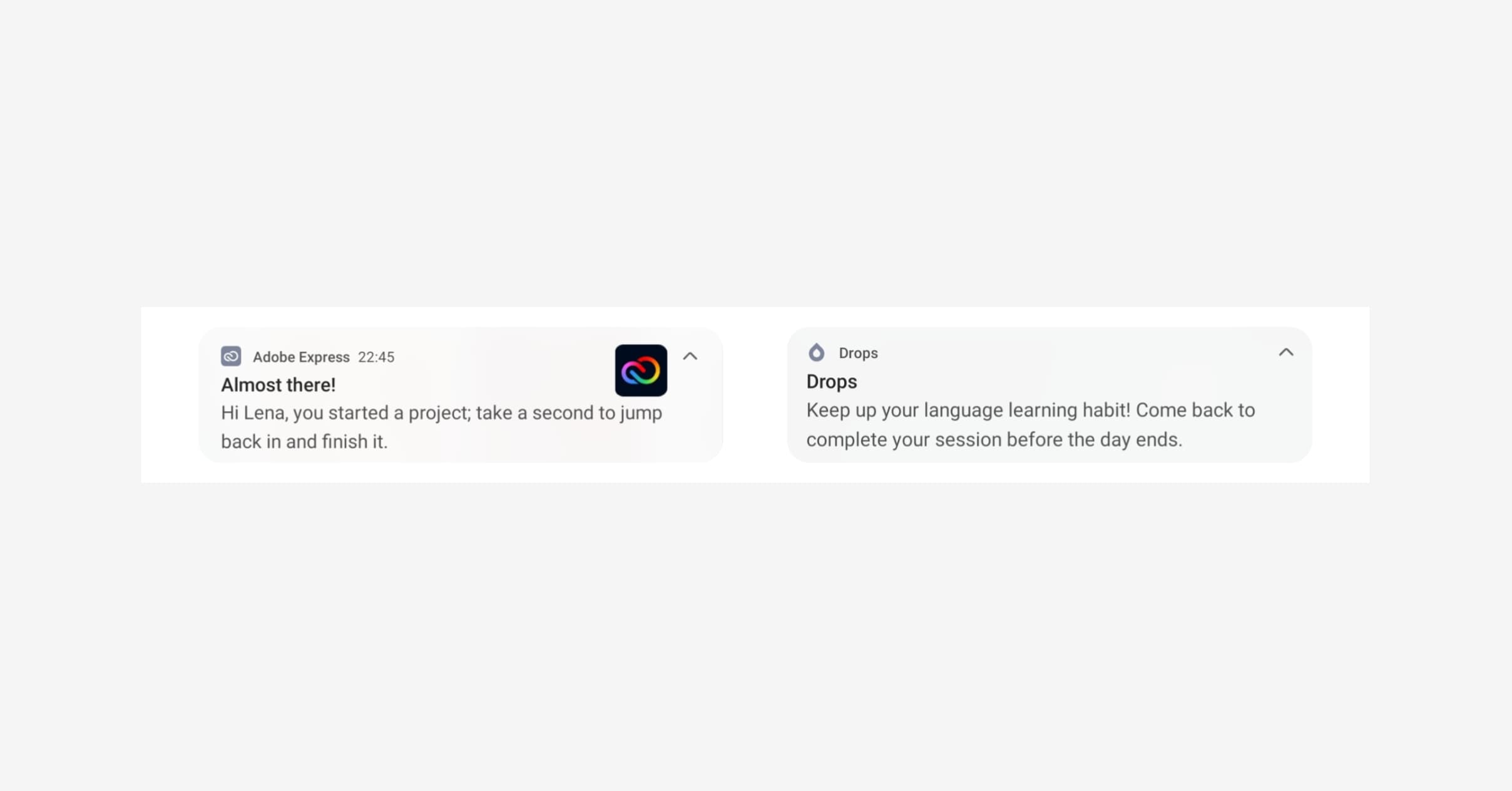

Adobe Express and Drops send push notifications to encourage users to complete the activation action
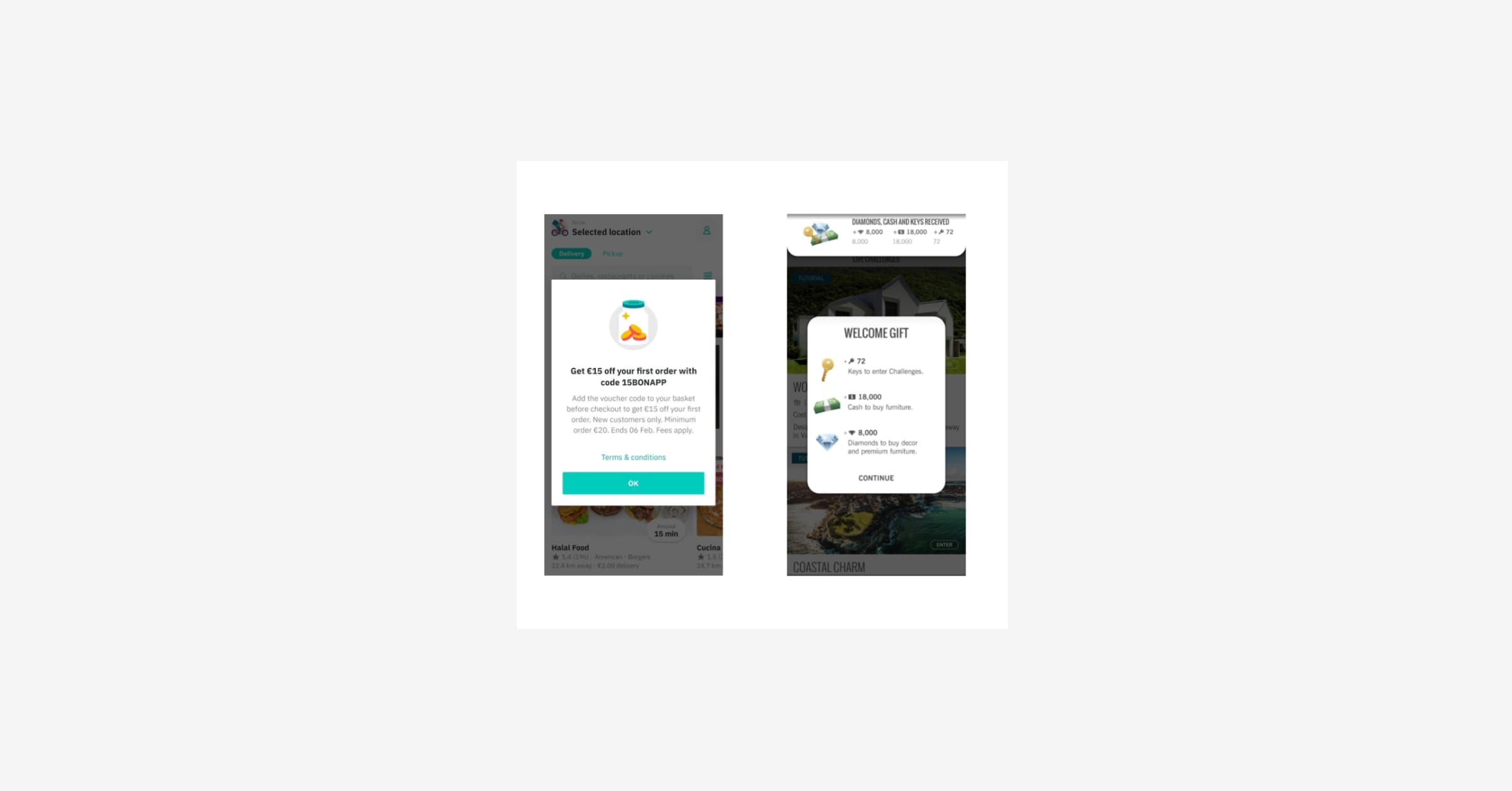

Delivery apps (like Deliveroo) and mobile games (like Design Home) stimulate activation with promo codes and rewards sent via in-app messages
Is the user committed?
You will determine your most engaged (and, thus, valuable) users by conducting a sort of RFM analysis of your app usage:
Recency: Has a user opened the app in the last 24, 48, or 72 hours (depending on what’s typical for your app category)?
Frequency: For example, how many times did they trigger the ‘app open’ event in the past week?
Tenure: You want to define your most engaged customers as those who have passed the first 30-day infatuation stage with your app. If a user keeps opening the app more than a month after the installation, you may want to treat them as special in your communications.
Once you’ve segmented out your committed customers, you can send messages that will convert their loyalty into monetary metrics.
For such a high-value purpose, you may want to use all the communication channels:
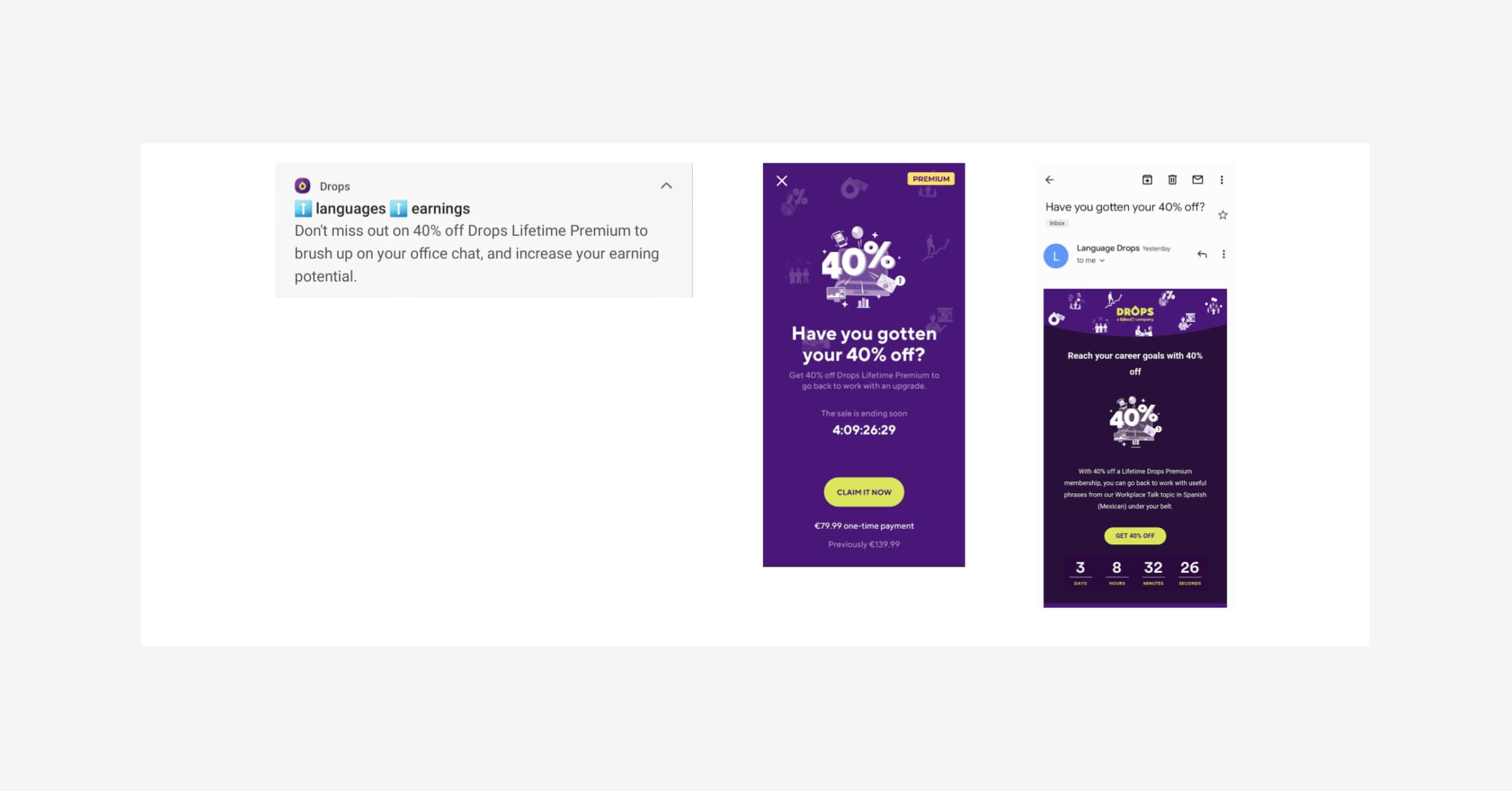

Drops use all means of communication to ensure its engaged customers are aware of their upgrade offer
And you may also want to pay closer attention to your non-committed customers. Can you design a strategy that will gradually grow their engagement? For example, consider delivering regular challenges, reminders, and new product/feature announcements that will encourage app opening.
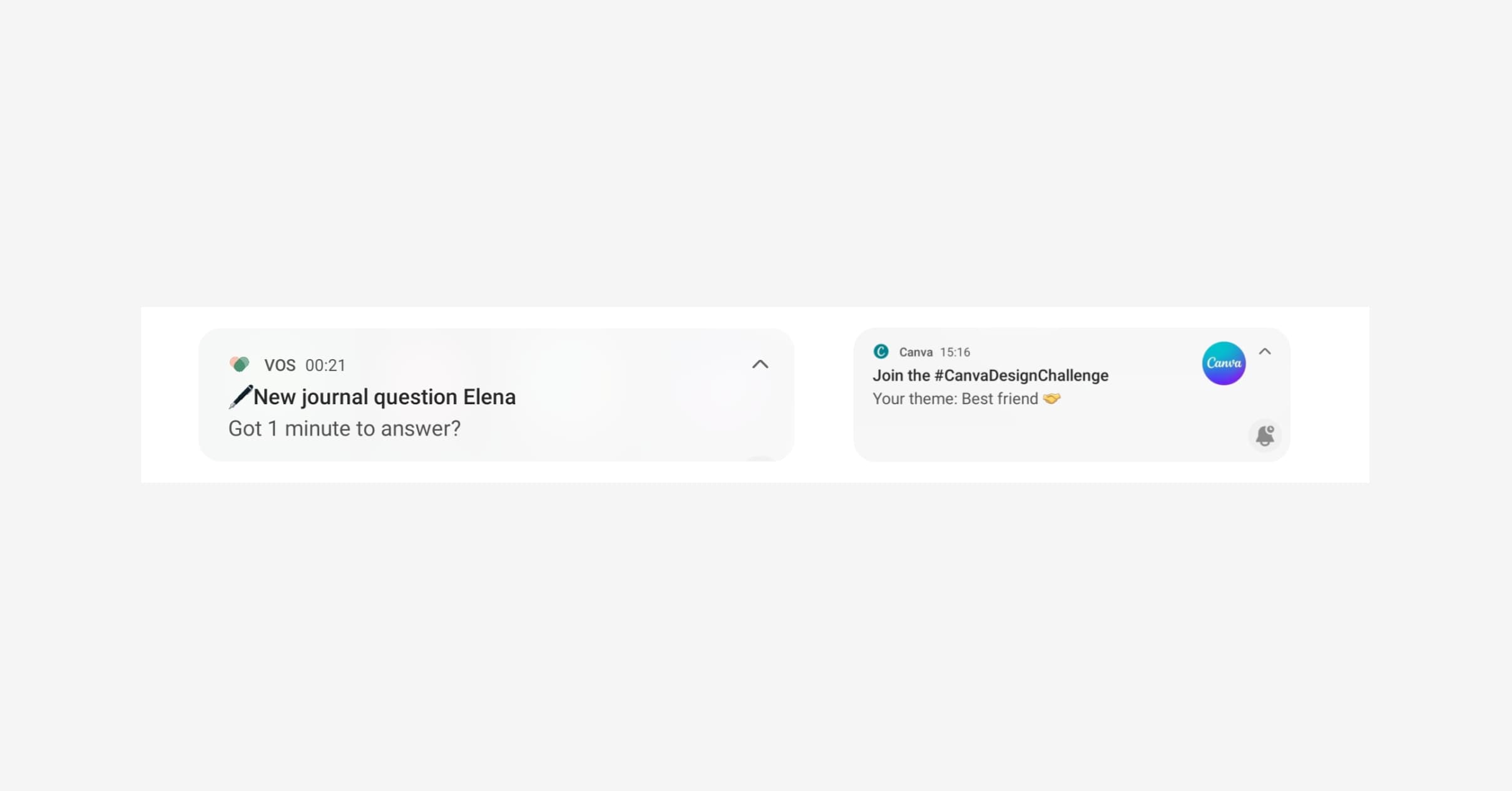

Scheduled push notifications are most effective (and efficient) in growing daily engagement
Does the user need to be re-activated?
Some users churn for good; others can restore their interest in the app after taking a pause in its usage. You can detect and address the second category with re-engaging communications.
First, you want to track the customers who haven’t opened your app for a significant period of time. Then, you may wait for them to take action = open your app. If they do, you will greet them in the app; if they don’t, you will try to attract them to come in.
Here is what your re-activating push notifications may look like. A more emotional tone of voice sounds right here, don’t you think?
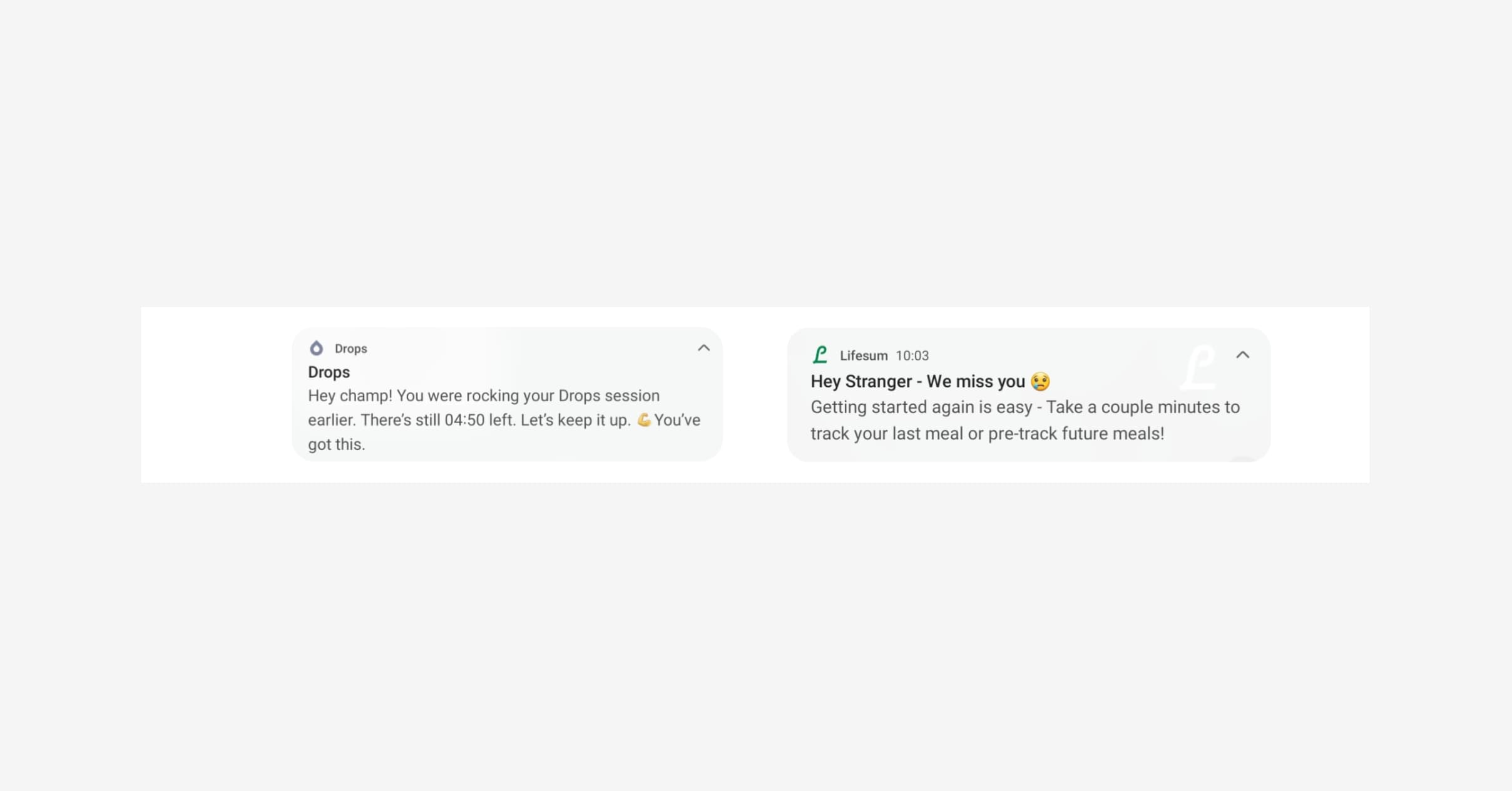

Drops and Lifesum use push notifications to get their recently inactive users back on track
Emails are relevant for re-engaging messaging too. The moment you reach out to your non-engaged customers may vary — it can be before or after the first app open in 3, 7, or 14 days.
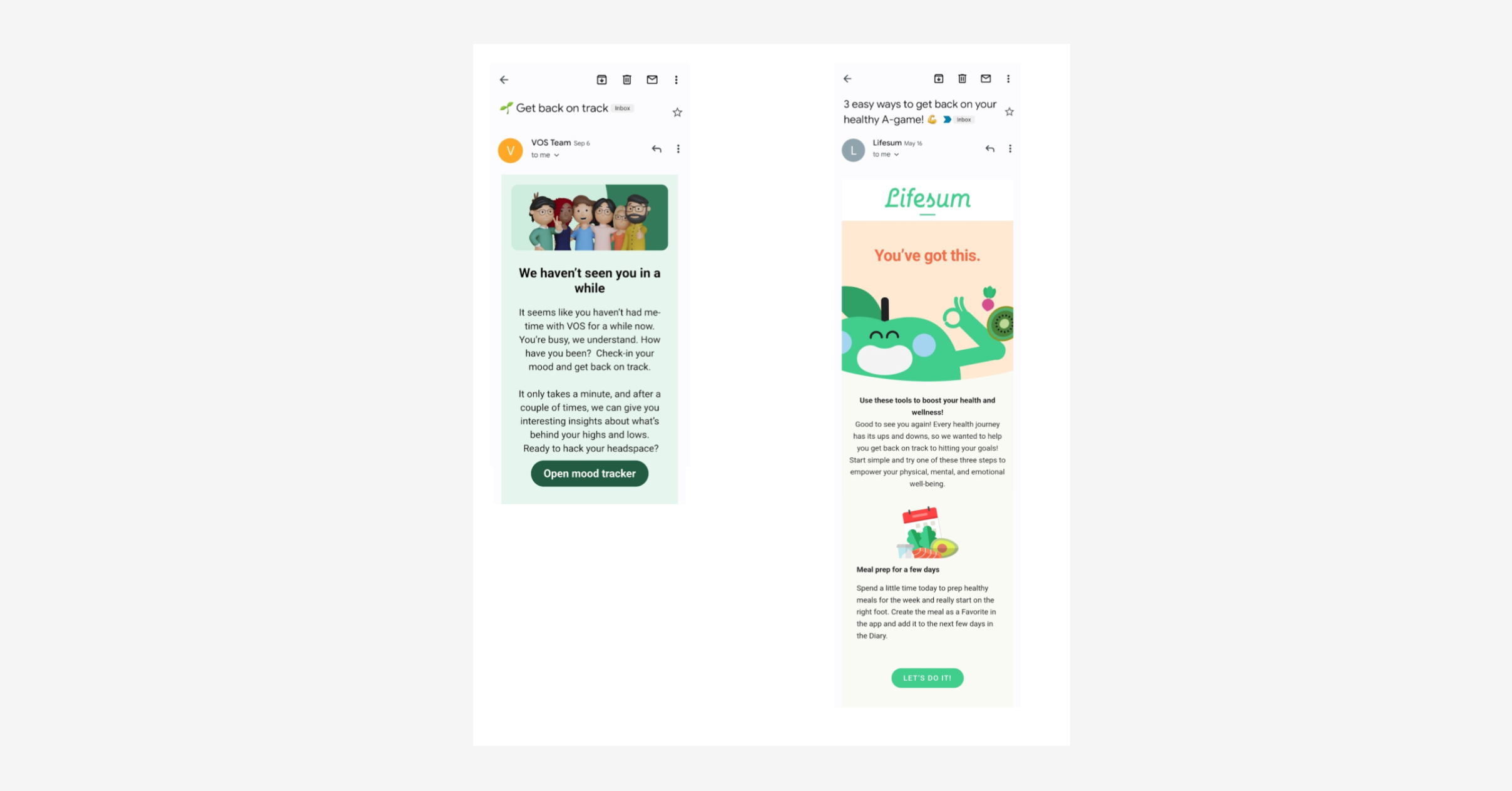

VOS sends re-engaging emails to all the users who haven’t been active for a while, while Lifesum targets specifically those who have finally opened the app
Step 2: Micro-interactions and in-app events
These were the fundamentals. Next, you want to determine the exact points that your customer will be the most perceptive to your communications. We recommend you go in reverse order:
1. Determine the action you want your customers to take
For example, try a new feature in your subscription-based app.
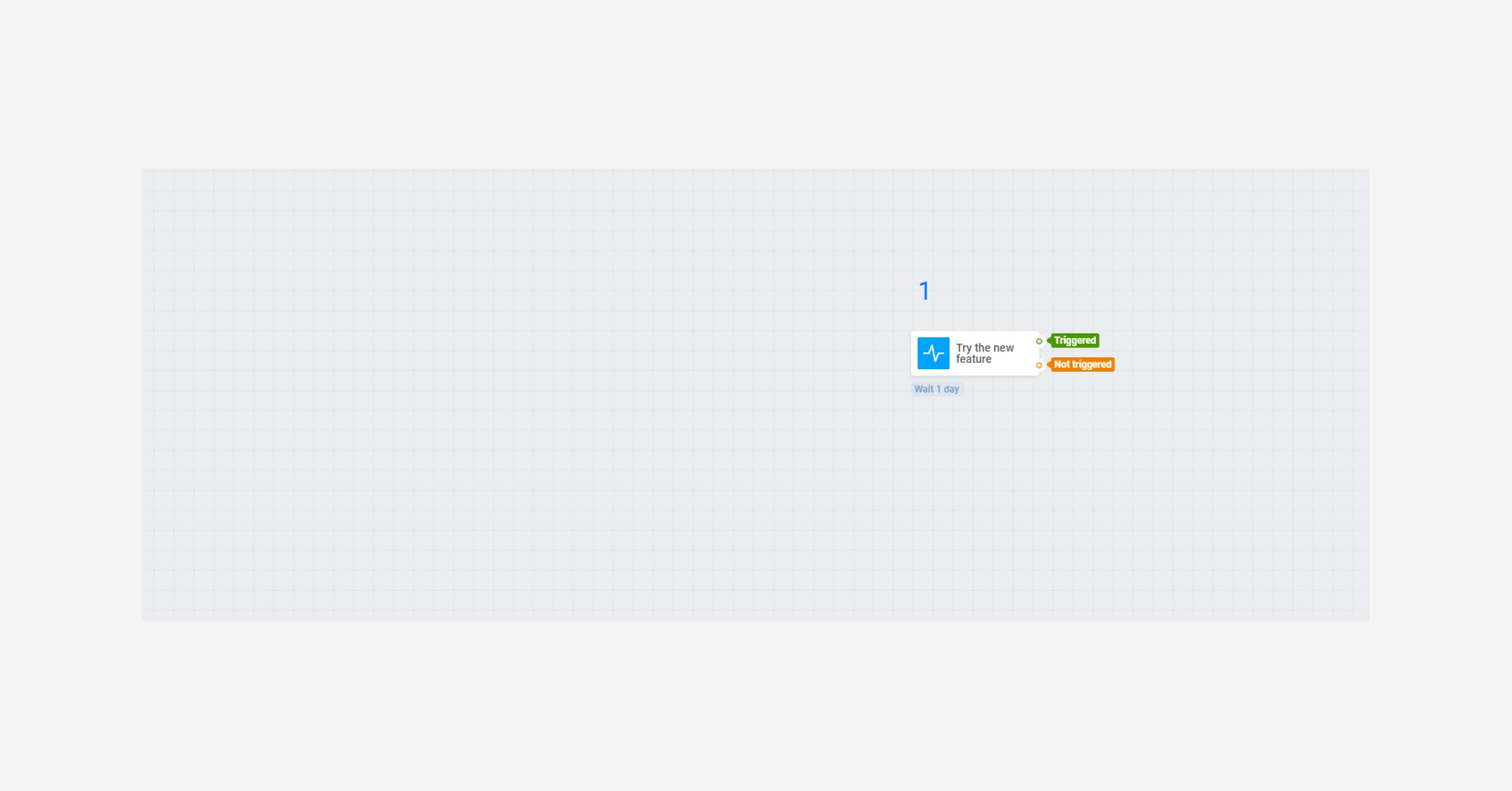

Target action that a mobile customer should take
2. Draft the communication to encourage them to perform the target action
In our example, this will be a new feature announcement. It can take the form of an in-app message or a push notification — we will be able to decide on the channel after taking the next step.
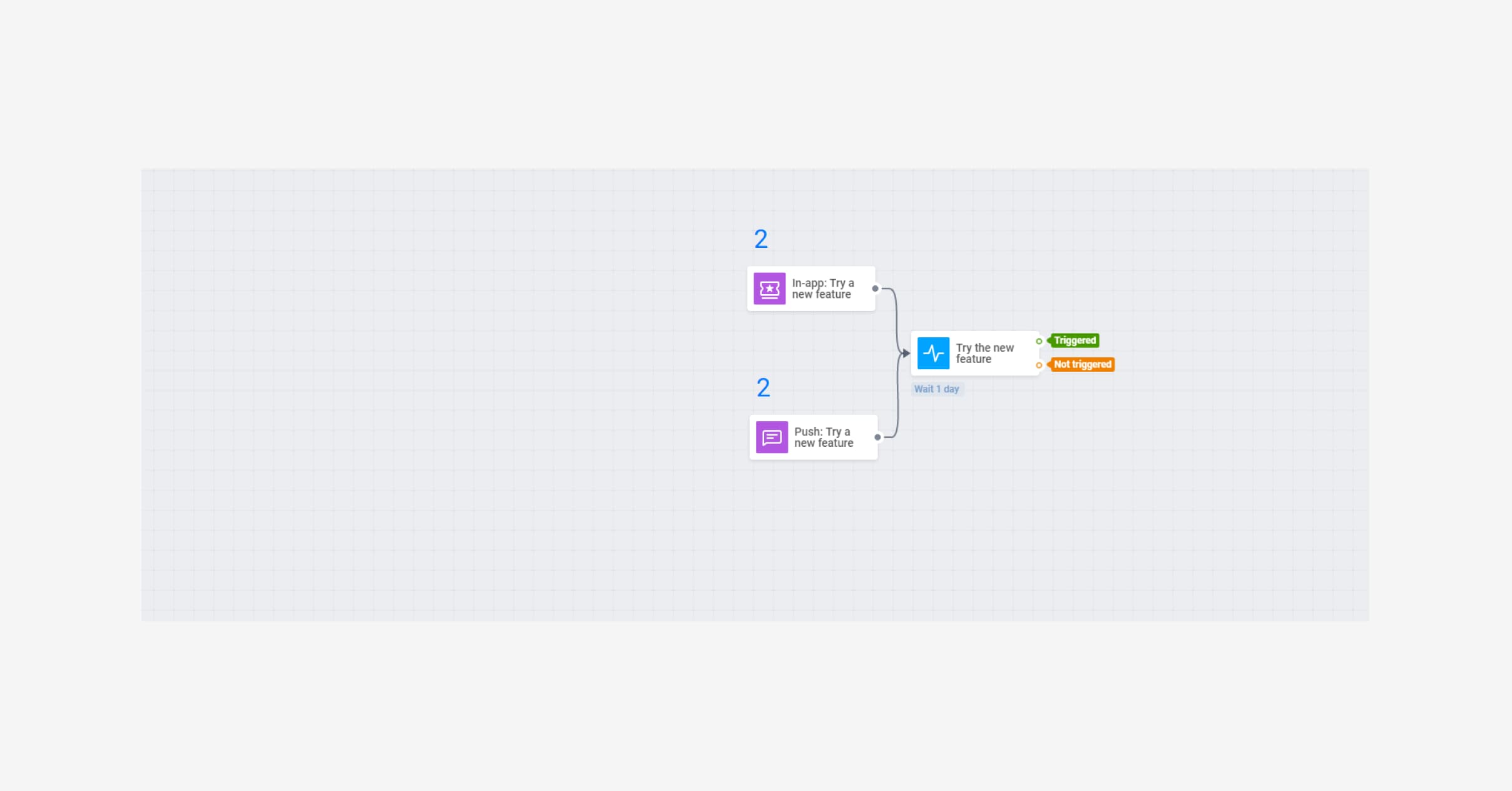

In-app or push - channels to engage mobile customers
3. Decide on the preceding action
What should your customer do before receiving your message? When is the moment they are the most perceptive of it?
In our case, we can bet on mobile users who have just opened the app — as they are interested in using the application, they might also be curious about trying its new functionality.
We may also use the new feature as a newsbreak to communicate to the rest of the audience who hasn’t opened the app. To these users, we will send a push.
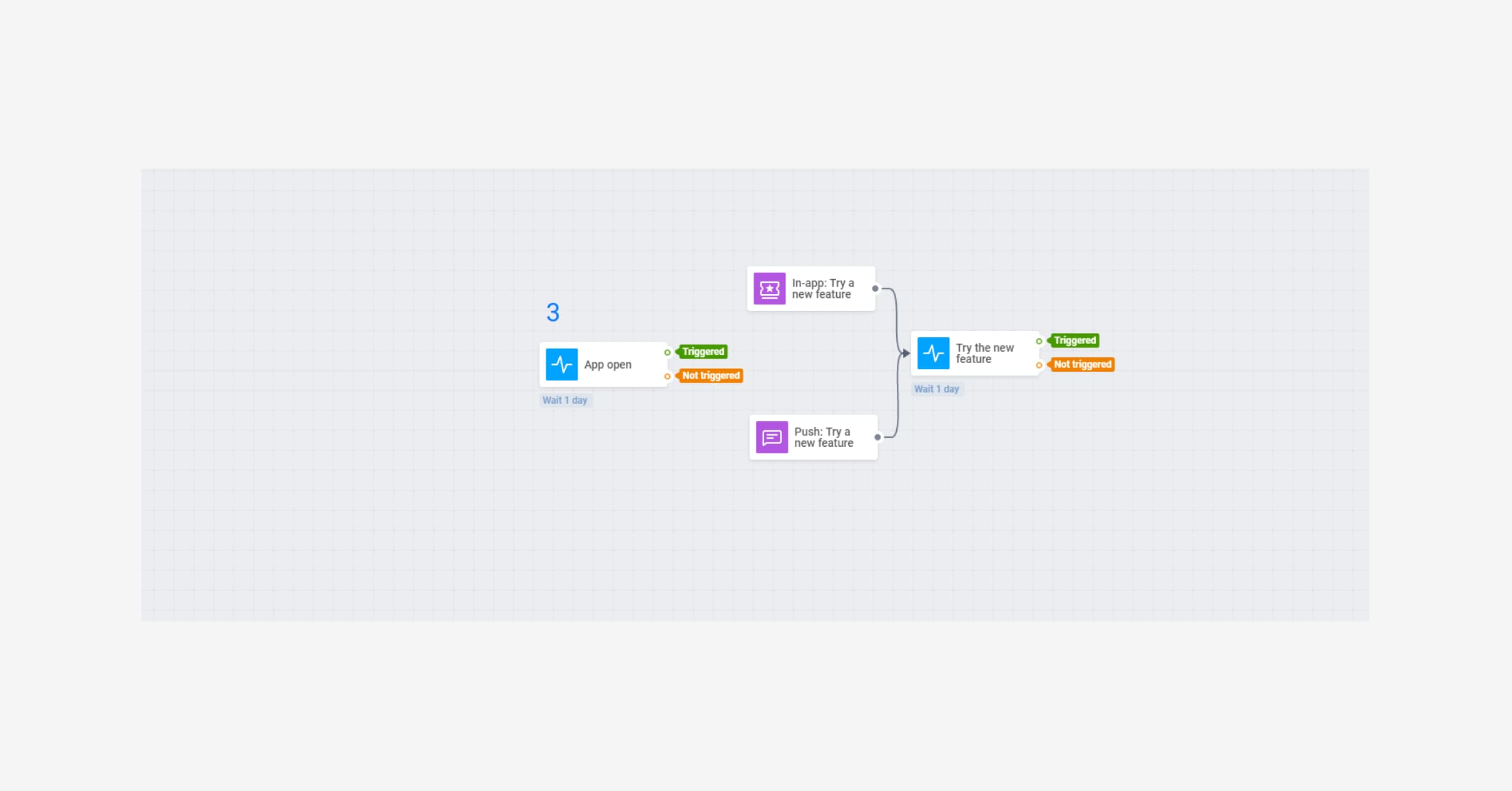

In-app event to be triggered before a communication is sent
4. Finalize your engagement journey
Having elaborated a similar mobile engagement strategy, you will build a comprehensive user engagement flow that will be set to start automatically at the most relevant moment and will lead the customer to your desired action.
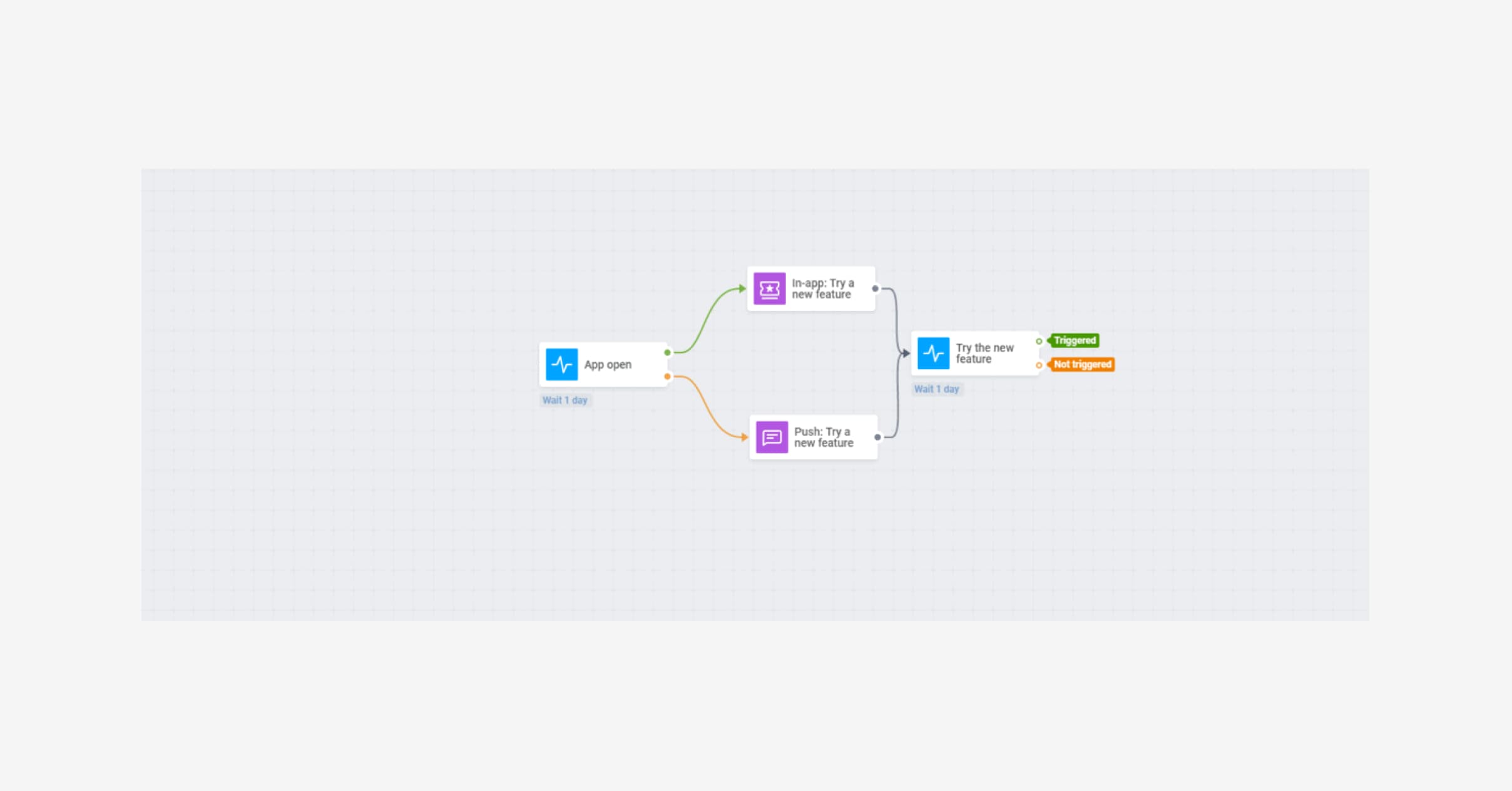

User engagement journey to try a new feature
5. Optimize and maximize your performance
For maximum conversions, we recommend you:
Rely on the insights from your favorite app behavior analytics tools
Use a bit of psychology (e.g., we’re all happy after making a purchase or accomplishing a round in a game)
Don’t overlook the common knowledge and understanding of your customer
Channels to engage your customer
Several essential aspects should guide your choice of engagement channels:
1. Out-of-the-app and in-the-app engagement channels
As we mentioned earlier, you can choose from the channels meant for out-of-the-app communication (push notifications and emails) and in-the-app communication (in-app messaging).
Push notifications and emails give you the freedom to reach out to the customer at the moments when you as a business have something to say. At the same time, this puts you at risk of delivering unsolicited messages — to avoid it, pay attention to those micro-interactions and in-app events we talked about above.
In-app messages, on the other hand, enjoy the privilege of being delivered when a customer is the most engaged with your brand. If you think of capitalizing on positive user experiences, in-apps are a go-to format for you.
2. Omnichannel engagement
To be effective, your communications should work strategically and not just arrive randomly. Think omnichannel: besides considering the target actions a customer has (or has not) taken, you may want to track user engagement with your messaging. If the communication sent via one channel didn’t perform as expected, refer to another format:
Has a customer opened your push notification or email? Alternate them.
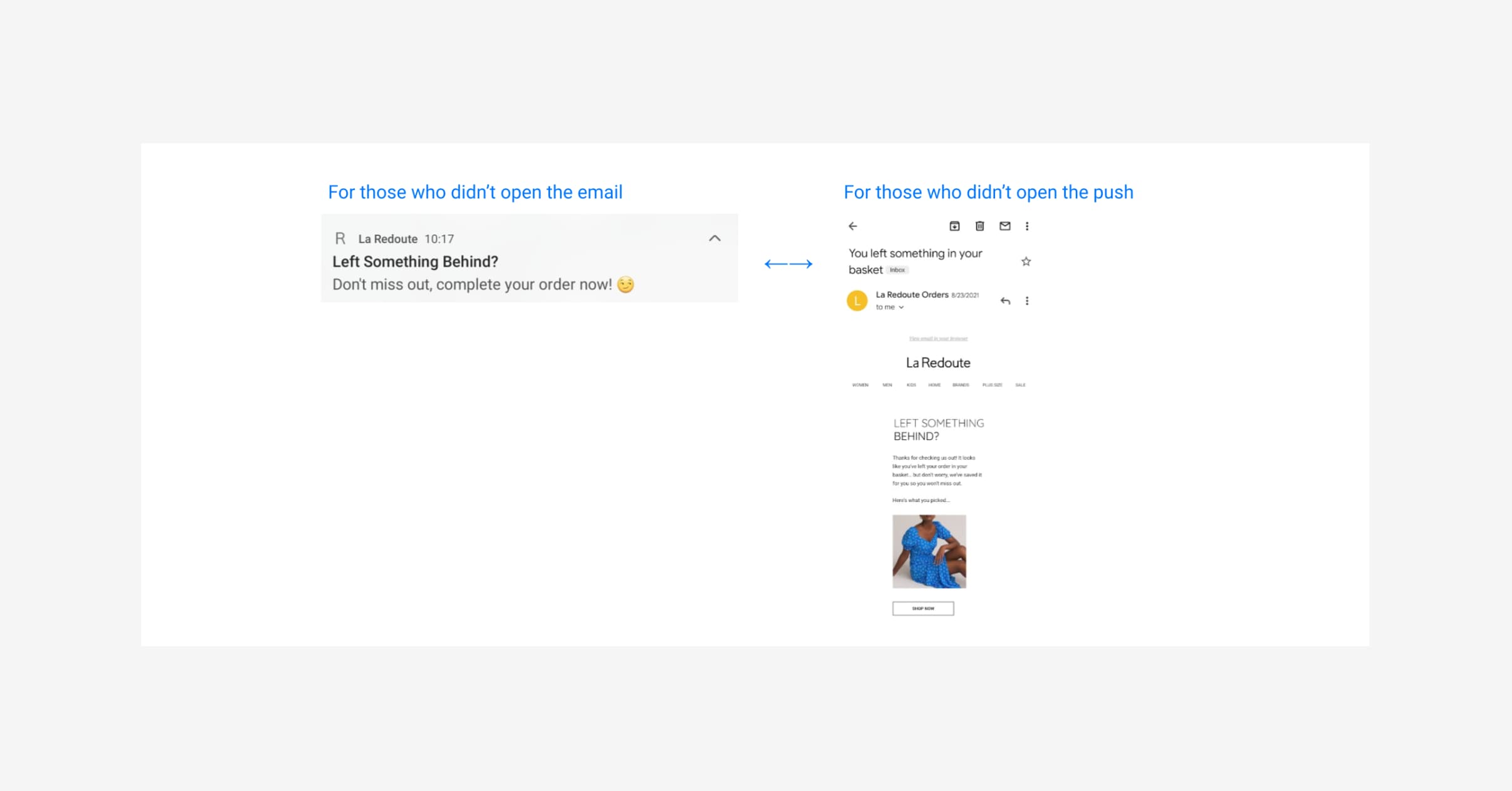

La Redoute sends abandoned cart reminders via push notifications and email: basically the same message in its essence but different channels
Has a user seized the offer you displayed in an in-app message? If not, send a reminder later or change the offer.
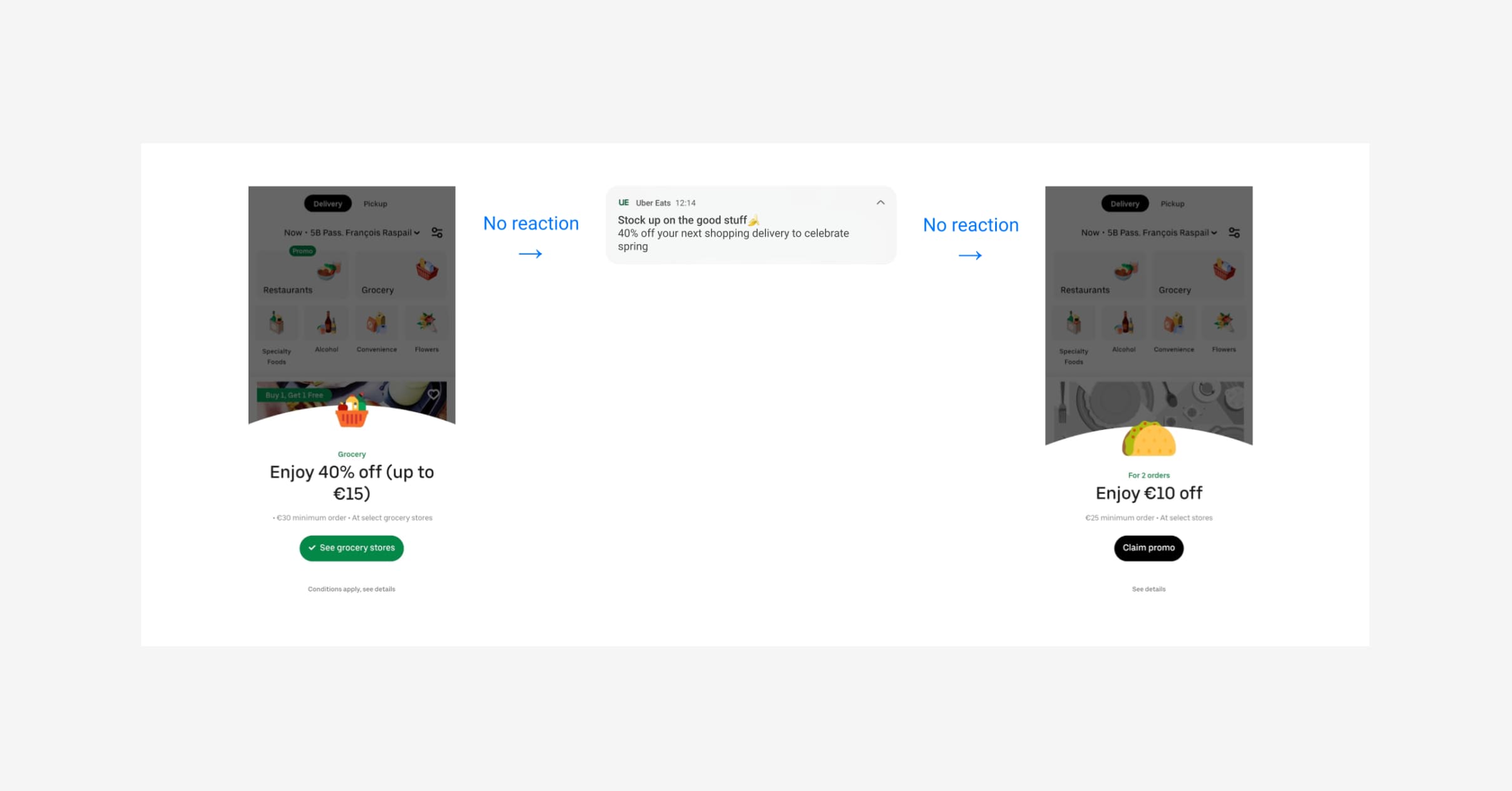

Uber Eats displays current promos in in-app messages. If a customer ignores them, they send a push reminder. If the latter is ignored, the app changes the offer promoted after the app open.
Is the customer still opted-in for your communications? If they have unsubscribed, try to get them back.
When you’ve mastered multichannel messaging, you can get around any obstacle in communication.
Behavior-based communication
It is no news that personalized communications help to achieve higher customer engagement. Yet it may need to be more evident that effective messages are created when you respond to real-time user behavior, not simply mention the information you know about your customer.
To engage your audience, you must be relevant in your customer’s mobile journey context. Staying relevant requires developing an omnichannel communication strategy, among other things, to reach out to your customers on the right channels and at the right time.
If you follow the recipe, your mobile engagement will rise.
You might also be interested in:
AUTHOR

Elena Kozlova
Content Marketing Manager @ Pushwoosh, the mobile-inspired customer engagement platform for high achievers. Using Pushwoosh’s tech-easy solutions, 80 000 companies from across the industries have built effective communication strategies with the use of push notifications, in-app messages, emails, SMS, WhatsApp, and omnichannel triggered messaging.
What’s UXCam?
Related articles
App Analytics
Mobile App Tracking: Practical Guide & Best Tools [2026]
The best tracking tools for mobile...

Jonas Kurzweg
Product Analytics Expert
App Analytics
Top Analytics SDKs 2026
Pick the right analytics SDKs to improve your app's...

Jonas Kurzweg
Product Analytics Expert
Product best practices
8 Best UX Analytics Tools and Software We’ve Tested 2025
A good UX design is key when it comes to user satisfaction. Learn about five of the best UX analytics tools you can use to get valuable insights about user...

Jonas Kurzweg
Product Analytics Expert


